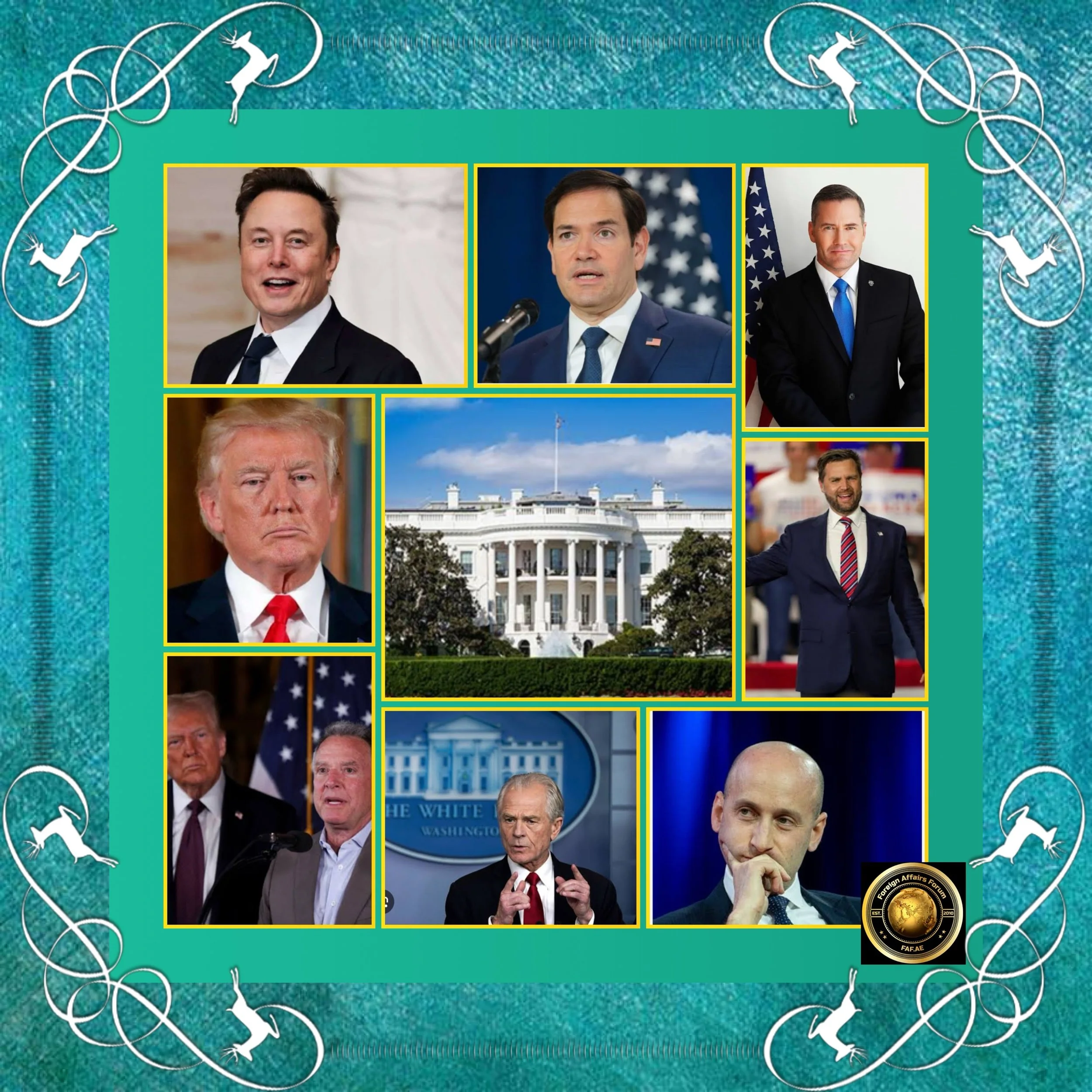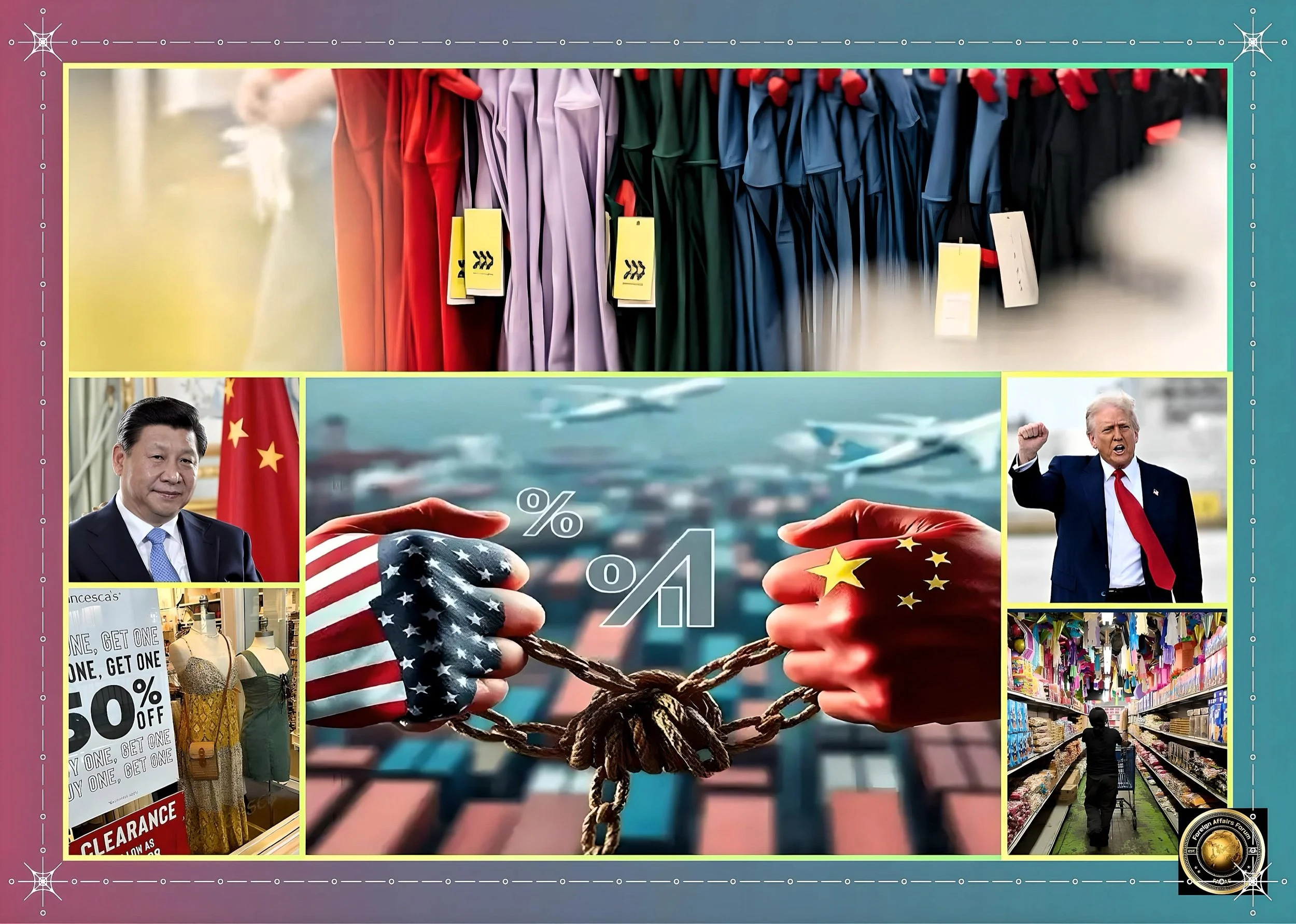Trump’s China Decoupling Strategy: An Analysis of Potential Backfiring Consequences
Introduction
President Donald Trump’s recent dramatic shifts in trade policy toward China - from imposing 145% tariffs to signaling they will “come down substantially” - exemplify the unpredictable nature of his second-term approach to Beijing.
While the administration’s ultimate strategy remains unclear, evidence suggests an underlying objective of forcing global economic decoupling from China through coalition-building.
FAF analysis examines why such a strategy faces significant obstacles and may backfire in three critical ways: by harming the US economy more than China, triggering robust Chinese countermeasures, and facing resistance from countries caught between the two powers.
The Shifting Landscape of Trump’s China Trade Policy
President Trump has signaled a significant potential shift in his trade war stance, stating that tariffs on Chinese goods will “come down substantially, but it won’t be zero.”
This unexpected softening follows weeks of aggressive escalation, during which tariffs on Chinese imports increased to 145%.
Treasury Secretary Scott Bessent’s recent comments at a JP Morgan Chase conference further suggest a recalibration, framing the goal as “rebalancing trade” rather than complete decoupling.
The back-and-forth pattern characterizes Trump’s approach to China trade relations.
On April 2, 2025, Trump launched sweeping global tariffs on a day his administration branded “Liberation Day,” building on months of escalatory announcements.
A week later, on April 9, he suspended most of these “reciprocal” tariffs for 90 days for nations other than China while directing the full force of trade restrictions at Beijing.
This selective approach appears designed to pressure countries to make choices about their economic relationships.
Trump’s strategy builds upon decades of his advocacy for protectionist measures. As Treasury Secretary Bessent frames it, these tariffs form part of a larger economic realignment to restore US industrial dominance.
Though rarely stated explicitly, one overarching goal appears to be undermining China’s export-led economic model, even with the understanding that the United States will suffer financial consequences.
Backfire Risk #1: Economic Self-Harm
The first significant risk in Trump’s decoupling strategy is that it could inflict greater economic damage on the United States than China.
According to International Monetary Fund projections, trade wars will reduce US GDP growth by 0.9 percentage points this year, while China faces a more minor impact of only 0.6 percentage points.
This asymmetric economic impact stems from fundamental trade realities: US goods imports from China ($439 billion in 2024) are more than three times greater than Chinese imports from the United States, meaning American companies will bear far higher tariff costs.
The global market response has already been troubling. US financial metrics show significant volatility, and economists are increasingly worried about stagflation—the toxic combination of stagnant growth and high inflation not seen since the 1970s.
The tariffs function as a consumption tax, raising prices on a wide range of consumer goods and eroding household purchasing power.
Meanwhile, the dollar has experienced a sharp decline against major currencies, including the euro, yen, and yuan, reflecting diminished investor confidence.
China’s strategic response compounds these economic challenges. Rather than implementing broad retaliatory measures that might harm its economy, Beijing has deployed what observers call “precision-guided economic munitions.”
These targeted actions include export controls on critical minerals essential for modern technologies and manufacturing and selective blocklisting of US firms.
These tactics inflict focused damage on vulnerable US supply chains while minimizing self-harm to China’s economy.
Backfire Risk #2: China’s Powerful Countermeasures
The second significant risk involves China’s substantial capacity for effective retaliation. Beijing has implemented a comprehensive response strategy combining punitive measures against the US with efforts to build alternative economic relationships globally.
China has matched Trump’s aggressive tariff approach by imposing duties of 125% on American goods, effectively eliminating US products from the Chinese market.
As China’s Commerce Ministry bluntly stated: “At the current tariff level, there is no market acceptance for US goods in China.” This represents a severe blow to American exporters who have invested heavily in accessing Chinese consumers.
Beyond tariffs, China has deployed more sophisticated countermeasures targeting US vulnerabilities.
In a particularly concerning development for high-tech industries, China has halted exports of key rare earth metals and magnets essential for electric vehicles, semiconductors, and defense systems.
With China controlling 99% of heavy rare earth refining and 90% of magnet production globally, this move exposes critical weaknesses in US supply chains.
China has also established new targeting mechanisms through expanded export control and “unreliable entity” lists that restrict Chinese companies from doing business with specific American firms.
Additionally, Beijing has targeted influential US industries by limiting Hollywood films screened in China and returning Boeing aircraft intended for Chinese airlines.
Perhaps most concerning for Trump’s coalition-building strategy, China has explicitly threatened countries contemplating alignment with the US.
The Chinese Commerce Ministry warned on April 21 that it “firmly opposes any party reaching a deal at the expense of China’s interests” and “will resolutely take reciprocal countermeasures” against nations that succumb to US pressure.
This intimidation strategy makes countries think twice before restricting trade with China in exchange for US tariff relief.
Backfire Risk #3: Limited Appeal to Global Partners
The third risk to Trump’s strategy lies in the fundamental challenge of convincing countries to reduce economic ties with China when doing so threatens their prosperity and stability.
Despite America’s significant global influence, China has become the larger trading partner for approximately 70% of countries worldwide, creating a powerful economic incentive against decoupling.
Countries throughout Asia and beyond are caught in an uncomfortable position between the competing demands of the world’s two largest economies.
For example, Vietnam serves as a manufacturing center and a conduit for Chinese exports to the US that bypass previous Trump administration tariffs.
For these nations, alignment with the US against China would mean sacrificing substantial economic benefits.
Even when Trump’s administration temporarily suspended tariffs on allies, the 90-day negotiation window created enormous pressure.
According to administration officials, approximately 90-100 countries expressed willingness to negotiate, creating a formidable challenge for US trade representatives working against the clock.
This time pressure hardly allows for the complex restructuring of deeply integrated supply chains that have taken decades to develop.
China has shrewdly capitalized on countries’ reluctance to choose sides by launching its diplomatic counteroffensive.
In April 2025, President Xi Jinping visited Vietnam, Cambodia, and Malaysia, signing numerous bilateral cooperation agreements and championing free, open trade.
Chinese officials have similarly engaged with Japan, South Korea, and the European Union to advocate for enhanced economic collaboration.
China’s warnings that concessions to the US will ultimately backfire further complicate matters for potential US allies.
As China’s Commerce Ministry colorfully stated: “Pursuing short-term self-benefit at the cost of others - in return for alleged exemptions - is akin to asking a tiger for its hide. Ultimately, it yields no benefits and harms both others and oneself”.
Technical Challenges of Decoupling
Beyond the three major backfiring risks, Trump’s strategy faces fundamental technical obstacles to achieving meaningful economic separation from China.
Decades of globalization have created deeply intertwined supply chains that resist simple disaggregation.
Genuine decoupling would involve far more than direct bilateral trade adjustments.
Many imports shipped to the US from third countries contain Chinese components, which is precisely why Trump implemented a 10% “baseline” tariff on all imports - to counteract other nations serving as conduits for Chinese goods.
This recognition of supply chain complexity undermines the feasibility of clean separation.
Technological decoupling presents even greater challenges.
A 2021 IMF study identified three channels through which technological separation negatively impacts global growth: reduced trade flows, misallocation of resources, and diminished cross-border knowledge sharing.
These effects can lead to significant global economic losses when combined with broader trade fragmentation.
The drive for economic self-sufficiency that underlies decoupling proves extremely costly, with success far from guaranteed.
As the Hinrich Foundation observed, “Reining in technonationalism is in the United States and China’s interests, but the political reality in both capitals is making rational policy formulation extremely difficult”.
Conclusion
The Paradox of Trump’s Approach
Trump’s strategy of forcing global decoupling from China through coalition-building faces substantial obstacles that threaten to undermine its effectiveness.
The strategy risks harming the US economy more than China’s, triggering powerful Chinese countermeasures, and encountering resistance from countries unwilling to sacrifice their economic relationship with the world’s largest trading nation.
These challenges may explain why Trump himself appears to be hedging his approach. After weeks of escalation, his recent comments that China tariffs will “come down substantially” suggest recognition of the costs involved in an all-out trade war.
Similarly, his assertion that “I believe we will coexist happily and ideally collaborate” indicates awareness that complete decoupling may be neither feasible nor desirable.
The fundamentally paradoxical nature of Trump’s approach - using economic damage as leverage while promising eventual prosperity - creates a strategic dilemma.
Even if some decoupling occurs, the process is likely to be partial, painful, and potentially counterproductive to America’s long-term economic and geopolitical interests.
As global markets, allies, and American consumers react to the consequences of these policies, further recalibration appears increasingly likely.
The ultimate question remains whether Trump’s understanding of these dynamics will translate into a coherent strategy that can achieve meaningful economic rebalancing without triggering the substantial backfiring risks that currently threaten his approach.






